Introduction
Achieving outstanding scores in DxOMark Mobile industry standard tests, the Samsung Galaxy S6 Edge becomes the new top-ranked device in our database. In fact, Samsung now occupies the top two spots for Mobile image quality with the Galaxy Note 4 also posting impressive results. We are publishing both the S6 Edge and Note 4 results simultaneously, so let’s start by analyzing the photographic strengths of Samsung’s flagship Smartphone.
Analysis of the data behind the S6’s DxOMark Mobile Photo sub-score of 88 identifies the smartphone’s strengths and weaknesses.
Its strongest aspects are Exposure & Contrast, Autofocus & Texture, all of which score 90 points or more. Importantly, its excellent Exposure & Contrast score of 90 was obtained shooting in both bright light as well as low-light environments, with the latter often the downfall of smaller-sensor cameras.
The S6’s color sub-score of 85 is very good as well and, as with Exposure & Contrast, was achieved shooting in all lighting conditions. Color results in bright light were a tad superior, however, as the S6’s low-light results were affected by some slight color shading. Shooting indoors under tungsten lighting conditions, the White Balance on stills also displays a slight yellow cast, but overall the colors still remain pleasant.
Color rendering in outdoor situations
Shooting outdoors, the S6 displays nice White Balance with strong and pleasant colors in all lighting conditions such as sunny and overcast days.
Color shading & exposure in bright light
Shooting outdoors in bright light, no color shading is visible (left). In scenes with high dynamic range, the S6 exposes well for the darker areas but at the expense of an over-exposed sky that will be tricky to recover (right).
Noise & detail shooting outdoors
The 16Mp resolution, 16:9 aspect ratio sensor produces a good quality A3 print at 255ppi when cropped down from native 16:9 format. Shooting in bright conditions, the 100% crops show that Noise is barely visible in homogenous areas, with fine detail recorded towards the center of the frame.
Sharpness analysis across the center & middle
Despite fine levels of detail capture in the center of the frame, there is a slight difference in sharpness towards the corners of the frame where the lens doesn’t resolve the same level of detail.
Color fringing in bright light
When shooting high-contrast scenes in bright light conditions, some slight color fringing is noticeable, but this is to be expected to some degree and is reasonably well-controlled on the S6.
Noise & details in low-light
Shooting under a 20 Lux tungsten light source (top), exposures are good, and although the White Balance turns slightly yellow/green, overall the colors remain pleasant. Even under low-light conditions, fine details are still visible (bottom left), particularly towards the center of the frame, and a slight luminance noise is noticeable only in homogenous areas (bottom right).
Low-light & Shutter time
Shooting in low-light conditions the S6 Edge’s exposure time of 1/10th Sec can result in a little blur despite the device’s image stabilization system. Ensuring you have a sturdy grip of the phone and shooting relatively static subjects will help. To be fair though slow shutter speeds in low-light aren’t uncommon with mobile devices, and the S6 Edge’s low-light exposure time is actually twice as quick as iPhone 6 Plus, which uses an even slower ¼ Sec Exposure Time in low-light.
Exposure & color in low-light
Shooting under low-light 20 Lux tungsten lighting (left), white balance has a slightly yellow cast, but colors remain good. There’s also slight color shading visible which affects the color sub-score, but it’s well controlled and isn’t a major concern. Shooting under extreme low-light conditions of just 5 Lux (right), exposures remain good and the color pleasant.
Using flash indoors
Using the S6’s LED flash as the only light source for a photo (top), the flash light is central within the frame with a uniform background. Flash-only results also display good details and noise levels (100% crop, bottom right), with accurate White Balance and plea
sant colors (top right). When mixing flash with a 20 Lux tungsten light source (bottom left), White Balance turns yellow/green, but colors remain pleasant.
Video on the S6 is strong, and although its video score of 84 isn’t as high as its Photo sub-score of 88, it is still among the best performing phones we’ve seen.
Shooting video under bright light, Exposure, White Balance, Texture, Noise, Autofocus, and Artifacts are all excellent, achieving scores over 90. Color rendering and color shading isn’t quite as good, but still very respectable with scores around 80 points.
The S6’s weakest aspect for video is its stabilization system, which results in strong image distortion. In the more challenging test cases, such as walking motion, the wobbly image effect is quite pronounced. The effect is controlled better with more static hand-held capture, but isn’t completely eradicated by the stabilization system.
Video results in low light are excellent, too, with scores following a similar pattern to the bright light results, with Exposure, Noise and Texture coming out on top, and color rendering and shading just a little behind.
Overall video exposures are good, particularly under well-balanced lighting conditions. However as with the S6’s still photos, when dealing with high-contrast outdoor scenes, the brighter areas of the video tended to be overexposed.
Color rendering on video is also good, with accurate White Balance in both bright light and low light. In fact, there’s actually a less-noticeable yellow/green White Balance cast on videos shot under tungsten lighting compared to the S6’s still photos.
What’s more, while White Balance convergence when adapting to sudden changes in the lighting is a little slow, it’s very acceptable, and the transition is smooth with no obvious overshoot or color bias.
That said, slight flare and minimal color shading were noticeable in some scenes when shooting under very sunny conditions, but we’re being picky, and actually found it to be well-controlled. Autofocus performance for video is very strong, too, with fast, stable and precise video autofocus in both bright as well as low-light conditions.
The most noticeable improvement on the S6 is in its autofocus performance, which had been a weakness in its predecessor, the S5. With autofocus scores lagging around the 70 mark for the S5, they’re now well into the 90’s on the S6, making it comparable to the excellent performance of the iPhone 6 Plus.
Exposure, Contrast, and Color scores among the three devices are also very similar, with the new S6 and the iPhone 6 Plus just having the edge over the older S5, but there’s not much in it.
Where the S6 does really excel over its smartphone competition, is in the categories of Flash, Noise and Texture, where it is now noticeably ahead of the iPhone 6 Plus. In fact, the only category in which the new Galaxy S6 doesn’t either excel or have parity with the competition is for Artefacts, where it’s behind both the iPhone 6 and S5. It’s a small margin, however, and put into context of the new S6’s outstanding results in the other categories, this a relatively minor issue.
As for video comparisons, by and large the results follow a pattern similar to the photo scores, with excellent results for Exposure and Contrast, Autofocus, Texture and Noise, all of which are just ahead of the competition.
Again, the S6 offers a notable improvement in video autofocus performance over its predecessor, the S5, and is slightly ahead of the iPhone 6 Plus in this regard, too. Both Samsung devices have notably better Exposure and Contrast video results compared to the iPhone 6 Plus as well, although the Apple device has slightly superior color for video. Where all three devices really struggle for decent results, however, is with their video stabilization systems. With scores languishing down around the 60-point mark, results are not great, but the new S6 does offer a modest improvement for stabilization over the older S5.
Achieving an overall DxOMark Mobile Score of 86, the new Samsung Galaxy S6 Edge is the new leader for smartphone image quality. With clear daylight ahead of the previous champion, the iPhone 6 with 82 points, it’s a very impressive result for the South Korean manufacturer’s latest flagship smartphone. Scoring 86 points overall means a 7-point increase over its predecessor, the S5, which now sits in fourth place overall with 79 points.
In addition to its impressive image quality scores, the camera tech specs on the new Samsung Galaxy S6 Edge are very compelling for the camera phone photographer. The main rear camera boasts a 16Mp resolution for capturing 5312×2988 pixel jpeg images in a wide-screen 16:9 aspect ratio.
For many traditional still photographers used to dealing in 3:2 or 4:3 ratios, the wide screen capture is a little unusual, but it’s better for video. The S6 easily packs enough resolution for photos to be cropped to a more standard aspect ratio in post-production if you desire. For video capture, there’s a range of video resolutions, including 2160p@30fps, 1080p@60fps, and even 720p@120fps for slow-motion effects.
The lens offers optical image stabilization and autofocus for both still and video capture. The front-facing camera is a lower resolution 5Mp offering for stills, with 1440p@30fps video for Skype and other applications.
The S6’s overall DxOMark Mobile score of 86 is a combination of its performance results across still and video in our Photo & Video sub-scores. Achieving a Photo sub-score of 88 and a Video sub-score of 84 means that the S6 is slightly stronger for still, but both results are ahead of the rest of the smartphone competition.
Photo Pros
- Very fine detail and low noise levels when shooting in bright light
- Good exposure
- Fast autofocus
- Nice White Balance and color in all outdoor conditions
- Good level of detail preserved in low-light shots
- Excellent flash-only results: good detail with minimal noise, accurate White Balance and good color
Video Pros
- Fine detail with low noise when shooting in both bright and low light
- Good exposure
- Good White Balance and color
Photo Cons
- Noise noticeable in low-light shots
- Slight color fringing noticeable
- Mixing flash and tungsten light results in slightly yellow/green White Balance
Video Cons
- Strong “jello” effect
- Slight flare is noticeable shooting in bright lighting conditions
- Slight color shading noticeable shooting in low-light conditions


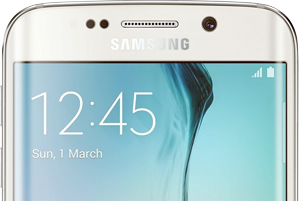


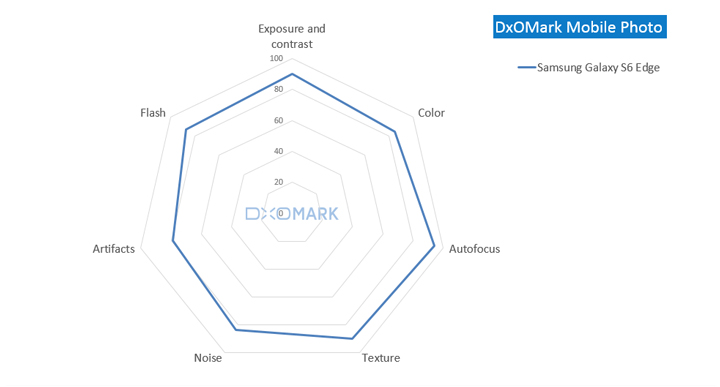
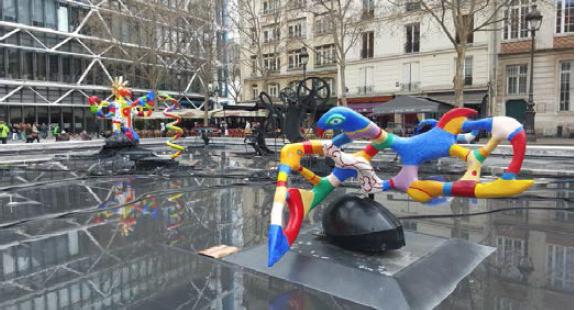
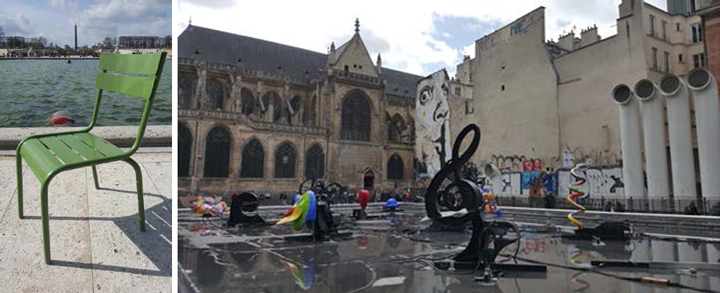

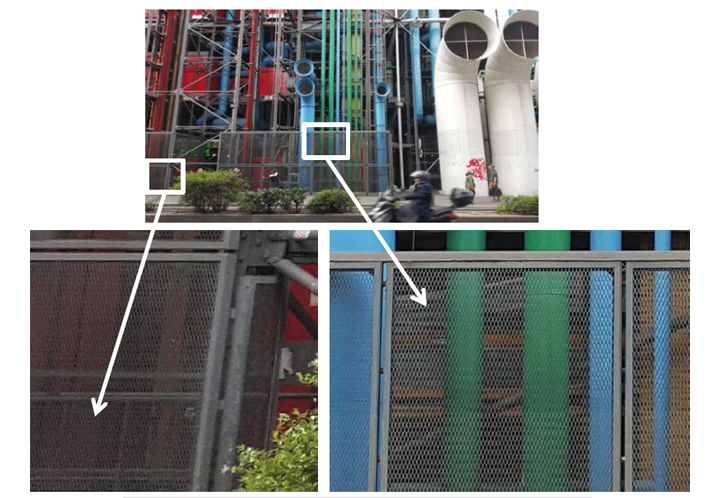
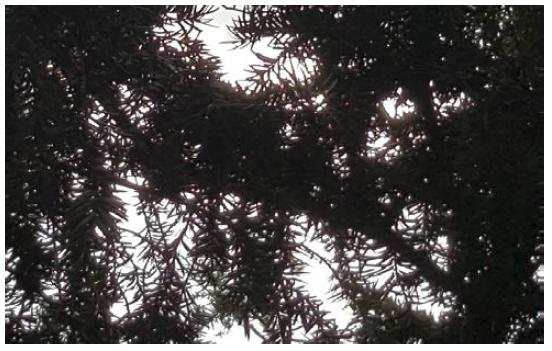
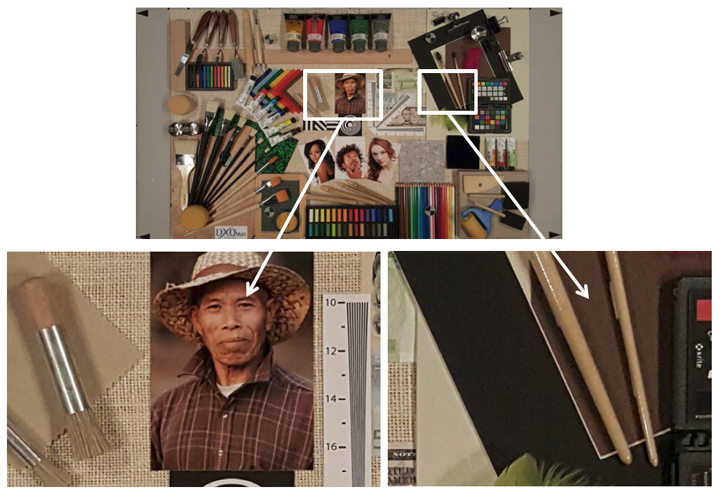
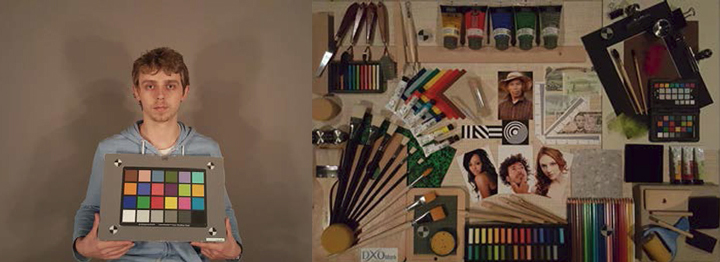

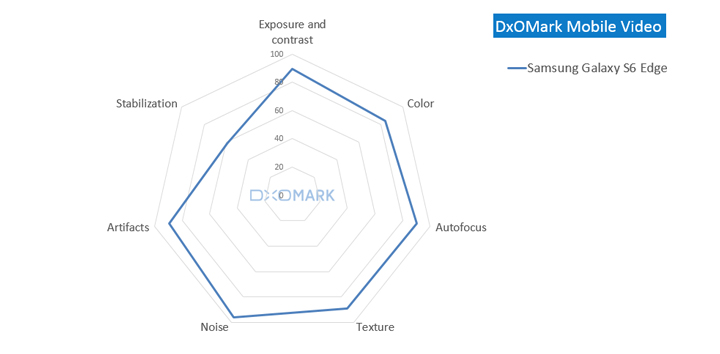

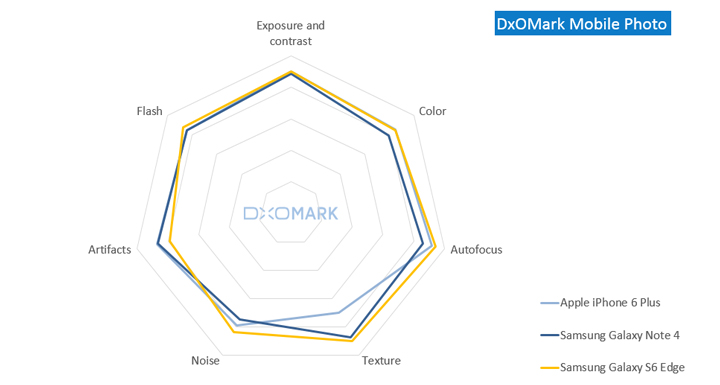

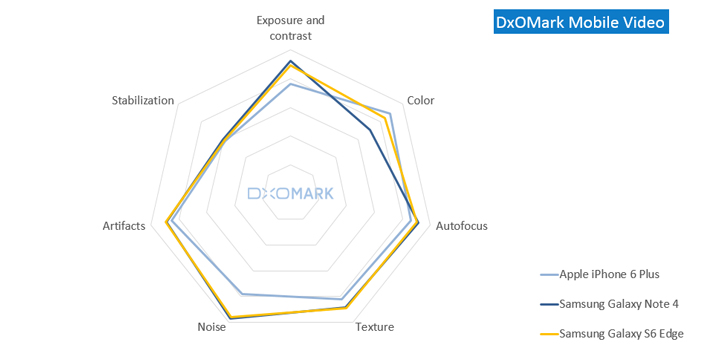
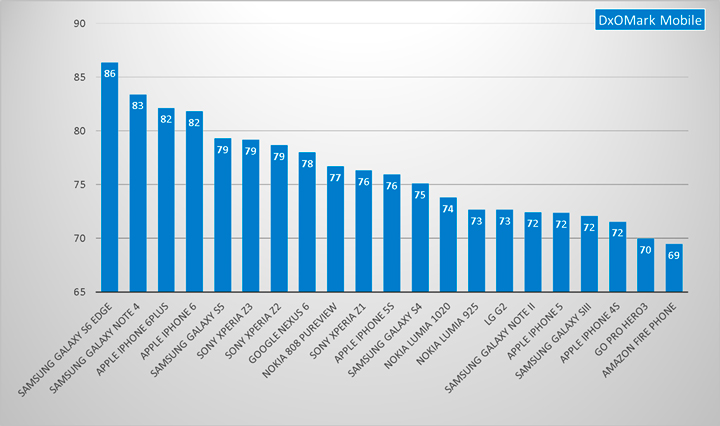

DXOMARK encourages its readers to share comments on the articles. To read or post comments, Disqus cookies are required. Change your Cookies Preferences and read more about our Comment Policy.